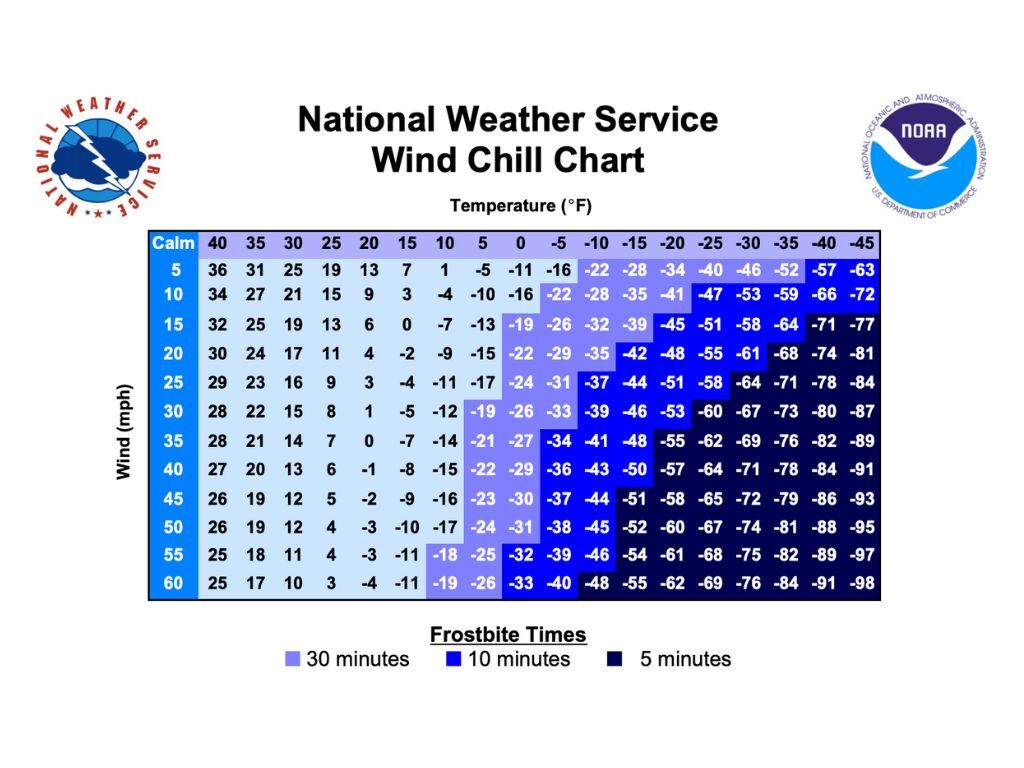DON’T FREEZE THIS WINTER: Here’s how long it takes for frostbite to occur at various temps and wind speeds

When it comes to exploring Colorado’s mountains, one big factor that tends get ignored during prep is the wind forecast.
Wind in Colorado can get extremely strong and varies quite a bit by location, elevation, and timing, making it crucial to heed warnings found on websites like the National Weather Service and Mountain-Forecast.com when planning for an outdoor recreation excursion.
One risk that comes with wind is a change in temperature – or at least, the temperature your body feels.
Wind removes warm air from the skin rapidly, making the body feel colder without changing the actual temperature of the surroundings. This is where the term ‘wind chill’ comes from – showing what the body feels when winds of a certain speed are present amid a certain air temperature. This is why the temperature reading of a spot won’t change despite a fan being on, even though the fan makes the space feel colder (creating air circulation can have different effects, as this replaces the air opposed to moving it around).
A big concern that stems from wind chill is how it can drop the time it takes for nasty cold weather-related health conditions like frostbite and hypothermia to set in.
See the chart below, published by the National Weather Service, to discover how wind can impact the temperature your body feels and how this changes the time it takes for frost bite to set in:

Find additional forecasting information on the National Weather Service website.
STAY INFORMED: Get free Colorado news with our daily newsletter (Click here)
Get OutThere
Signup today for free and be the first to get notified on new updates.






